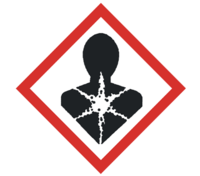Before handling hazardous substances, every employee and every student is obliged to inform themselves about the danger of the substance or mixture by means of the operating instructions or safety data sheets.
The operating instructions and safety data sheets must be made available by the responsible persons.
The identified special hazards (hazard statements) and
safety advice (precautionary statements) must be observed.
Operating instructions Hazardous substances
| Operating instructions Hazardous substances | Operating instructions Laboratory facilities and equipment |
In the context of the risk assessment according to Sec. 5 of the Occupational Health and Safety Act, it is determined whether employees carry out activities with hazardous substances or whether hazardous substances can be created or released during activities (Sec. 6 Ordinance on Hazardous Substances (GefStoffV)). If this is the case, all risks to the health and safety of the employees are to be evaluated under consideration of the hazardous properties of the substances or preparations including their chemical-physical effects (Sec. 7 GefStoffV).
The risk assessment is therefore the core element for the classification and labelling of chemicals and preparations.
Not carrying out a risk assessment can lead to the following disadvantages:
- Many substances must be unnecessarily classified as poisonous substances.
- These substances must then be kept in a secure, locked place.
- Special instruction manuals must be created.
Chemical registry at the University of Hohenheim
The University of Hohenheim has its own chemical registry. It includes all chemicals which have been used at the University. With the help of the chemical registry:
- it is possible for institutes to categorize their chemicals in a registry according to the requirements of the Ordinance on Hazardous Substances.
- in case of a fire in an area, it can be determined which substances are stored there and what danger might arise from these substances. The fire department can then use the appropriate extinguishing methods.
For the purpose of water protection, no toxic or persistent substances may enter the wastewater.

